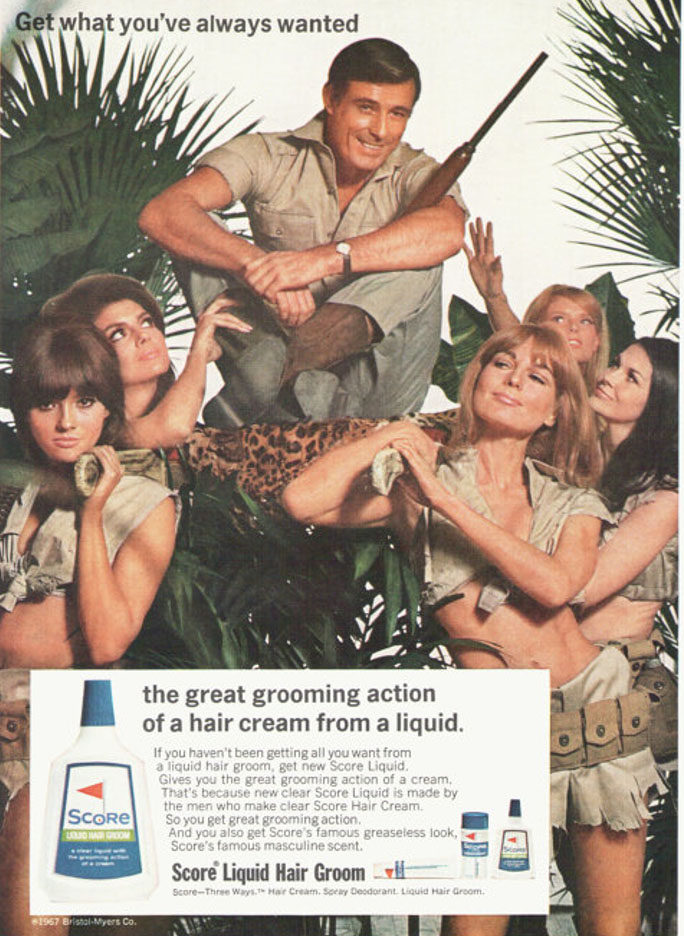
within this image we can see many women surrounding a man and holding him up in his sedan chair representing that he is of importance and that he is to be sought after the African safari type style is very bland with its white background and plastic foliage and there is not one African female or male the way the women look at the man is very suggestive as if that he’s their “prey” the woman are wearing very tight shorts and very revealing clothes where the man is coved up. the way of levelling of the man being higher than the man suggests matriarchy where the product is using women as eye-candy for their the non-relevant product for an anti-balding cream/liquid. the line at the top says “get what you always wanted” suggesting that its not just the affects of the cream but what you get after it..
in my opinion the narrative of this product is that the man uses the product and the woman smell the alluring scent of the cream and when they see him they look at his full thick hair and decide to take him away and worship him and then take him back to the tribe and “admire” his manliness
the desire of the product is that if you have thick hair you will look more younger and hotter than before and saying that you will have women surround you
The Score hair cream advert is an historical artefact from 1967, as such it can be examined productively by considering its historical, social and cultural contexts, particularly as it relates to gender roles, sexuality and the historical context of advertising techniques. 1967 can be seen as a period of slow transformation in western cultures with legislation about and changing attitudes to the role of women – and men – in society, something that the advert can be seen to negotiate.
Similarly, feminist critical thought became much more prominent and pronounced during the counter cultural movements of the late 1960’s and early 1970’s, which heralded, among other changes a greater acceptance of birth control and divorce, abortion and homosexuality.
There was also the abolition of hanging and theatre censorship, and the Obscene Publications Act (1959) which led to the Chatterly trial. Nevertheless, as Johnathon Dollimore wrote: ‘all this should not be seen as a straightforward displacement of dominant conservative attitudes‘ (1983:59).
as well as the discrimination of homosexuality
